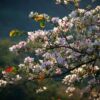**The Intriguing Interactions Between Porcelain Flowers and Animals**

Porcelain flowers, scientifically known as Hoya, not only captivate humans with their beauty but also play an essential role in ecosystems by attracting and interacting with various animals. From pollinators and herbivores to predators and parasites, porcelain flowers engage in a fascinating array of relationships with different animal species. In this article, we explore the diverse interactions between porcelain flowers and animals, shedding light on the ecological significance and evolutionary adaptations that have shaped these intricate relationships.
**1. Pollination Partnerships:**
One of the most crucial interactions between porcelain flowers and animals is pollination, wherein animals aid in the transfer of pollen between flowers, facilitating reproduction. Porcelain flowers employ a variety of strategies to attract pollinators, including bees, butterflies, moths, and ants, with their fragrant nectar, colorful blooms, and intricate floral structures. As pollinators visit the flowers to feed on nectar or collect pollen, they inadvertently transfer pollen from one flower to another, ensuring the fertilization and production of seeds.
**2. Mutualistic Relationships:**
Many animals that visit porcelain flowers for nectar or pollen engage in mutualistic relationships with the plants, benefiting both parties involved. For example, bees and butterflies rely on the nectar and pollen provided by porcelain flowers as a source of food, while simultaneously aiding in pollination. In return, porcelain flowers receive the essential service of pollination, which enables them to reproduce and produce seeds for future generations. These mutualistic relationships contribute to the stability and resilience of ecosystems, ensuring the survival of both plants and animals.
**3. Herbivore Interactions:**
While porcelain flowers often attract pollinators with their floral rewards, they may also encounter herbivores that consume their leaves, stems, or flowers. Some herbivorous insects, such as caterpillars and beetles, may feed on the foliage of porcelain flowers, causing damage to the plants. However, porcelain flowers have evolved various defense mechanisms to deter herbivores, including toxic compounds, spines, and sticky secretions. Additionally, the presence of herbivores may attract predators and parasitoids that help control herbivore populations, contributing to the overall balance of the ecosystem.
**4. Predator-Prey Dynamics:**
Porcelain flowers and the animals that visit them are also involved in predator-prey dynamics, wherein predators hunt and consume prey species that interact with the flowers. For example, spiders may build webs among porcelain flower plants to capture flying insects, such as bees and butterflies, that visit the flowers for nectar. Similarly, predatory insects, such as mantises and assassin bugs, may lie in wait among the flowers to ambush unsuspecting prey. These interactions contribute to the regulation of insect populations within ecosystems, preventing outbreaks of pest species and maintaining biodiversity.
**5. Parasitic Relationships:**
In addition to mutualistic and predatory interactions, porcelain flowers may also engage in parasitic relationships with certain animals, wherein one organism benefits at the expense of another. For example, some parasitic insects, such as aphids and scale insects, may infest porcelain flower plants, feeding on their sap and weakening the plants’ overall health. While these parasitic relationships can be detrimental to porcelain flowers, they may also provide food sources for other organisms higher up the food chain, such as predatory insects and birds.
**Conclusion:**
In conclusion, the interactions between porcelain flowers and animals are diverse, complex, and essential to the functioning of ecosystems. From pollination and mutualistic relationships to herbivore interactions and predator-prey dynamics, porcelain flowers engage in a fascinating array of relationships with various animal species. By understanding these interactions, we gain insight into the interconnectedness of life on Earth and the importance of preserving biodiversity and ecological balance. As we continue to study and appreciate the intricate relationships between porcelain flowers and animals, we deepen our understanding of the natural world and the web of life that sustains us all.

